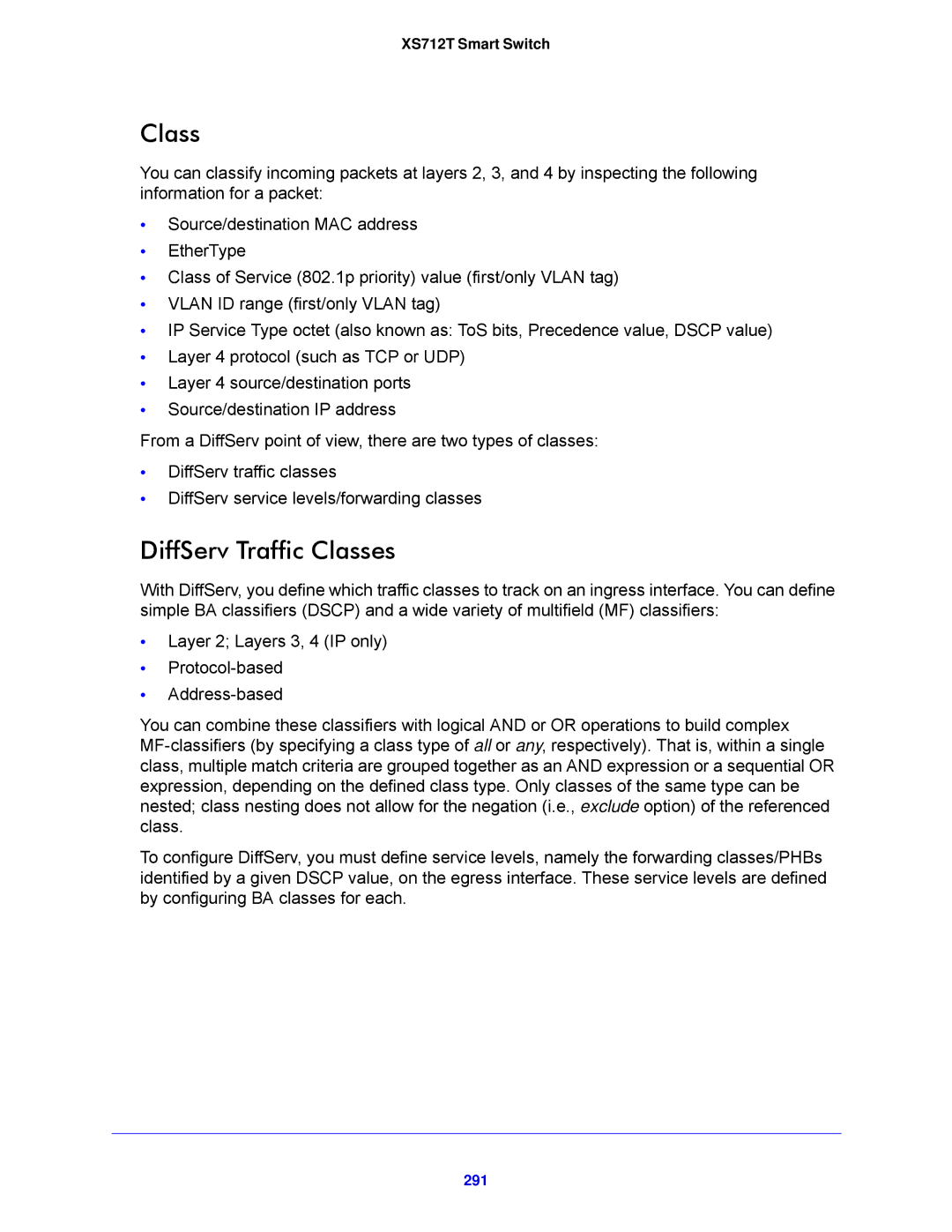XS712T Smart Switch
Class
You can classify incoming packets at layers 2, 3, and 4 by inspecting the following information for a packet:
•Source/destination MAC address
•EtherType
•Class of Service (802.1p priority) value (first/only VLAN tag)
•VLAN ID range (first/only VLAN tag)
•IP Service Type octet (also known as: ToS bits, Precedence value, DSCP value)
•Layer 4 protocol (such as TCP or UDP)
•Layer 4 source/destination ports
•Source/destination IP address
From a DiffServ point of view, there are two types of classes:
•DiffServ traffic classes
•DiffServ service levels/forwarding classes
DiffServ Traffic Classes
With DiffServ, you define which traffic classes to track on an ingress interface. You can define simple BA classifiers (DSCP) and a wide variety of multifield (MF) classifiers:
•Layer 2; Layers 3, 4 (IP only)
•
•
You can combine these classifiers with logical AND or OR operations to build complex
To configure DiffServ, you must define service levels, namely the forwarding classes/PHBs identified by a given DSCP value, on the egress interface. These service levels are defined by configuring BA classes for each.
